- What Is the Forex Commission or How Do Brokers Make Money in 2025?
- 1. Understanding Forex Commission in 2025: A Quick Overview
- 2. How Do Forex Brokers Really Make Money?
- 3. Types of Forex Commissions Explained (With Real-World Examples)
- 4. What’s the Difference Between Spread and Commission in Forex?
- 5. Commission-Free Forex Trading: Is It Really Free in 2025?
- 6. Do ECN Brokers Charge Higher Commissions Than Market Makers?
- 7. Comparing Forex Broker Fees in 2025: What Should You Look For?
- 8. Regulation and Transparency: How Trustworthy Are Forex Brokers Today?
- 9. Smart Ways to Reduce Your Forex Trading Costs
- 10. Real Trader Experiences: How Commissions Affect Long-Term Gains
- 11. Related Reads: Deepen Your Forex Knowledge
- 12. FAQs and Trusted Resources on Forex Commissions (2025 Edition)
- Frequently Asked Questions
- What is the average Forex commission per trade in 2025?
- Are zero-commission brokers safe to use?
- Can I reduce Forex commissions as a high-volume trader?
- What’s better: low spread with commission or wider spread with no commission?
- Do swap fees count as commissions?
- How can I calculate total trading cost?
- External Resources You Can Trust
- Final Thoughts
What Is the Forex Commission or How Do Brokers Make Money in 2025?
If you’ve ever dipped your toes into the world of Forex trading, you’ve probably asked yourself: “How do Forex brokers actually make money?” Or maybe you’ve seen terms like “commission-free trading” or “tight spreads” and wondered what they really mean for your wallet.
In 2025, Forex commissions remain a key way brokers earn revenue—but the landscape is evolving fast. With more retail traders joining the market, stricter regulations in high-CPM countries like the USA, UK, Australia, and Singapore, and advanced trading platforms using AI and real-time analytics, understanding how brokers charge their fees has never been more important.
This blog will break it all down for you in plain English—from the difference between commissions and spreads to whether “zero-commission” trading is really a good deal. You’ll also learn how to compare broker fee structures, how ECN and Market Maker brokers differ, and how to reduce your trading costs with smart strategies in 2025.
By the end, you’ll not only understand what Forex commission means—you’ll also be better equipped to make informed decisions, protect your capital, and choose a broker that aligns with your trading goals.
Tip: If you’re still comparing brokers, don’t miss our Forex Broker Regulation Guide to help you find one that’s safe, transparent, and reliable.
1. Understanding Forex Commission in 2025: A Quick Overview
In simple terms, a Forex commission is the fee your broker charges you for executing a trade. While some brokers label it explicitly, others build it into the spread—the difference between the buy and sell price.
But in 2025, it’s not just about fees anymore. With tighter regulations across countries like the USA, UK, Australia, and Singapore, brokers are required to be more transparent in how they charge you. This means traders today have more clarity—but also more choices, which can be confusing if you’re new to the market.
Here’s what you need to know:
- Commission = Broker’s Service Fee
Usually charged per trade, per lot, or as a percentage of trade volume. - Spread = Indirect Commission
Even “zero-commission” brokers still make money through wider spreads. - Other Charges
Think swap fees (overnight positions), inactivity fees, and withdrawal charges.
Quick Insight: Many retail traders don’t realize they’re paying more through wide spreads than they would with a low, transparent commission model. If you’re unsure how spreads work, check out our guide on Forex Spread vs Commission to get a clearer picture.
Why This Matters for You in 2025
The Forex market is more competitive than ever, with brokers offering eye-catching promos like “commission-free trading.” But savvy traders in high-CPM markets are starting to ask better questions:
“What’s the total cost of my trade—including spreads, commissions, and slippage?”
That’s the right mindset—and exactly what this guide will help you develop.
2. How Do Forex Brokers Really Make Money?
It’s a common question—if trading is “commission-free,” how are brokers still in business? The answer lies in the multiple revenue streams that Forex brokers tap into. Even when they waive upfront fees, they’re earning in ways you may not immediately notice.
The Core Revenue Models of Forex Brokers
Let’s break down the primary ways brokers earn money in 2025:
1. Spread Markups
The spread is the difference between the bid (buy) and ask (sell) price of a currency pair. Brokers often mark up this spread, especially with retail clients, creating a hidden commission.
For example, if the real market spread is 0.2 pips, your broker may charge 1.5 pips—pocketing the difference.
2. Direct Trading Commissions
This is a transparent fee, typically charged per trade or per lot. ECN (Electronic Communication Network) brokers commonly use this model and offer raw spreads plus a fixed commission—which can be more cost-effective for high-volume traders.
3. Swap or Rollover Fees
If you hold a position overnight, you’ll likely be charged (or credited) an interest fee called a swap. Brokers earn here by offering you one rate while receiving a more favorable rate from the interbank market.
4. Account-Related Charges
These include:
- Inactivity fees
- Deposit/withdrawal charges
- Data feeds or premium platform access
5. Slippage and Requotes
Some Market Maker brokers take the opposite side of your trade. In fast-moving markets, you may face slippage (getting a worse price than expected), which indirectly benefits the broker.
Want to know which broker model is right for you? Check out our full guide to ECN vs Market Maker brokers and how it impacts trading costs.
So, Is “Zero Commission” Ever Really Free?
In most cases, no. While you might not see a line item labeled “commission,” brokers often widen spreads or adjust swap rates to compensate. Always look at the effective trading cost, not just marketing headlines.

3. Types of Forex Commissions Explained (With Real-World Examples)
Not all Forex commissions are created equal. In fact, understanding the type of commission structure your broker uses can make a big difference in your long-term trading profitability. In 2025, brokers in markets like the US, UK, Canada, Australia, and Singapore offer a mix of fee models, and each one has its pros and cons.
Let’s explore the main types of Forex commissions, along with clear examples so you can spot them when evaluating brokers.
1. Per-Lot Commission Model (Most Common with ECN Brokers)
This model charges a fixed fee per standard lot traded. It’s popular with ECN and STP brokers that offer raw or low spreads.
Example:
You trade 1 lot of EUR/USD. The broker charges $7 per round turn ($3.50 to open + $3.50 to close).
Best For:
Experienced or high-frequency traders who benefit from tighter spreads.
2. Percentage-Based Commission
Some brokers charge a percentage of your trade volume instead of a flat amount. This is more common in institutional platforms but is now appearing in select retail broker accounts.
Example:
Your broker charges 0.02% of trade volume. On a $100,000 trade, that’s $20 round trip.
Best For:
Traders with smaller accounts who want scalable fees.
3. Spread-Only Model (Commission-Free Accounts)
With this model, the broker earns entirely through the spread, not through a visible commission. It’s promoted as “zero commission trading,” but spreads are often marked up.
Example:
True market spread on GBP/USD is 0.8 pips, but your broker charges 2.0 pips—making 1.2 pips as profit.
Watch Out:
Wider spreads may increase your break-even point and slippage risk.
4. Tiered or Volume-Based Discounts
Some brokers reward active traders with lower commission rates as your trading volume increases over time.
Example:
Under $50K monthly volume = $7/lot
Over $500K = $4/lot
Best For:
Scalpers, day traders, or those using trading bots.
Choosing the Right Commission Structure for You
Here’s a quick comparison:
| Commission Type | Transparency | Cost Predictability | Who It’s For |
| Per-Lot | High | High | Intermediate to Pro Traders |
| Percentage-Based | Medium | Medium | Low-to-Medium Capital Traders |
| Spread-Only | Low | Low | Beginners |
| Tiered Discounts | High | High (with volume) | Active Traders |
Need help comparing brokers based on real costs?
Use our updated Forex Broker Fee Comparison Tool for a side-by-side breakdown.
In the next section, we’ll explore one of the most confusing questions traders ask:
What’s the difference between a commission and a spread?
Let me know when you’re ready for Section 4!
Absolutely! Here’s Section 4 of your blog post, written to align with SEO, GEO, and E-E-A-T best practices:
4. What’s the Difference Between Spread and Commission in Forex?
If you’re new to Forex or even if you’ve been trading casually, you’ve probably wondered:
“Are spread and commission the same thing?”
The short answer is no—but both are ways your broker makes money.
In 2025, with so many brokers offering “tight spreads” or “zero commissions,” it’s important to know how each pricing model works, and which one is actually better for you as a trader.
What Is a Spread?
A spread is the difference between the buying price (ask) and the selling price (bid) of a currency pair.
- Example: EUR/USD: 1.1200 (bid) / 1.1203 (ask) = 3-pip spread
- The broker keeps those 3 pips as profit when you enter or exit a trade.
This model is common in market maker accounts, where brokers offer commission-free trades but widen the spread to earn revenue.
What Is a Commission?
A commission is a separate fee that some brokers charge in addition to or instead of the spread. It’s often a flat rate per trade or per lot.
- Example: An ECN broker offers a raw spread of 0.2 pips and charges $7 per round-turn trade.
You’ll usually find this model with ECN or STP brokers, which offer access to real market prices and tighter spreads.
Spread vs. Commission: Which Is Better in 2025?
| Criteria | Spread-Only Broker | Commission-Based Broker |
| Transparency | Low | High |
| Trading Cost (for small trades) | May be higher | May be lower |
| Best for Beginners? | ✅ Yes (simpler) | ❌ Not always |
| Best for High Volume Traders? | ❌ Not ideal | ✅ Yes (cheaper over time) |
Pro Tip: Don’t just look for “zero commission” claims. Ask:
“What’s the effective spread?”
That’s where hidden costs often hide.
Want a deeper breakdown? Check out our Forex Spread vs Commission guide to compare real-world trading scenarios and see which model fits your strategy.
5. Commission-Free Forex Trading: Is It Really Free in 2025?
“Trade with zero commissions!”
“No fees—ever!“
You’ve likely seen these headlines while browsing broker websites. But in the world of Forex trading, “free” is rarely truly free—especially in 2025.
Let’s break down what commission-free Forex trading really means, and whether it’s actually better or more expensive for you in the long run.
What Does “Zero Commission” Actually Mean?
When a broker advertises commission-free trading, they typically:
- Eliminate explicit per-trade fees
- Widen the spreads to make up the cost
- Sometimes adjust swap rates to maintain profit margins
So while you don’t see a direct charge for executing a trade, the cost is baked into the spread—and that can quietly eat into your profits.
Real-World Example
Let’s say you’re trading GBP/USD:
- Commission-Based Broker:
- Spread: 0.8 pips
- Commission: $7 per round trip
- Total cost = Transparent and often lower for larger trades
- Commission-Free Broker:
- Spread: 2.0 pips
- No visible commission
- Total cost = Higher on average, especially for frequent traders
Verdict: You might save on smaller trades, but over time, wider spreads add up—especially if you’re a scalper or trade high volume.
Why Do Brokers Offer Commission-Free Accounts?
It’s mostly marketing. For newer traders, the idea of not paying a fee feels appealing. But brokers still need to cover operational costs and turn a profit, so they shift those charges into less obvious areas.
When Commission-Free Trading Might Make Sense
- You’re a casual trader making only a few trades per month
- You value simplicity and predictable pricing
- You trade currency pairs with minimal volatility (less likely to be affected by wide spreads)
Want to compare real cost differences between brokers?
Check out our updated Forex Broker Fee Comparison Tool to see how zero-commission accounts stack up against low-spread, commission-based options.
6. Do ECN Brokers Charge Higher Commissions Than Market Makers?
One of the most common questions in Forex trading is:
“Are ECN brokers more expensive than Market Makers?”
The answer depends on how you define “expensive.” While ECN brokers often charge visible commissions, Market Makers may hide costs in wider spreads. Understanding the difference between these two models is crucial if you’re serious about minimizing trading expenses in 2025.
What Is an ECN Broker?
An ECN (Electronic Communication Network) broker connects you directly to liquidity providers (banks, institutions, and other traders). You get raw, tight spreads but pay a transparent commission per trade.
Key Features:
- Ultra-low spreads (as low as 0.1 pips)
- Commission-based fee structure (e.g., $7 round-trip per lot)
- True market pricing with minimal conflict of interest
Ideal For:
Professional traders, scalpers, and those using automated trading systems.
What Is a Market Maker Broker?
Market Makers quote both buy and sell prices and may take the opposite side of your trade. They earn through spread markups and sometimes benefit from your trading losses.
Key Features:
- No visible commission
- Wider spreads (can be 2–3 pips or more)
- Simpler platforms, often marketed toward beginners
Ideal For:
New traders looking for all-in-one platforms and basic tools.
Cost Comparison: ECN vs. Market Maker
| Feature | ECN Broker | Market Maker Broker |
| Spreads | Extremely tight (0.1–0.5 pips) | Wider (1.5–3.0+ pips) |
| Commission | Yes (e.g., $6–$8 per round turn) | No direct commission |
| Pricing Transparency | ✅ High | ❌ Low (costs hidden in spread) |
| Execution Speed | ✅ Faster, less slippage | Slower, with potential requotes |
| Trust Level (Regulated Markets) | ✅ High (usually regulated strictly) | ⚠️ Varies greatly |
What’s Better in 2025?
If you’re trading in high-CPM countries like the USA, UK, Canada, or Australia, you’ll likely prefer regulated ECN brokers due to:
- Greater transparency
- Lower overall trading costs for high-volume
- Better execution speeds
But for beginners, Market Makers may offer simpler onboarding, lower minimum deposits, and user-friendly platforms.
Related Read: ECN vs Market Maker Brokers – Which Is Right for You?
7. Comparing Forex Broker Fees in 2025: What Should You Look For?
Not all Forex brokers are created equal—and in 2025, comparing trading fees goes way beyond just checking if they offer “zero commissions.” With more brokers targeting traders in high-CPM countries like the US, UK, Australia, and Singapore, it’s crucial to know what fees to compare and how to read between the lines.
Key Fee Types to Compare
When evaluating broker costs, here’s what to focus on:
| Fee Type | Description |
| Spread | Built-in cost per trade; tighter spreads are generally better |
| Commission per Lot | Common with ECN brokers; usually $6–$8 per round trip |
| Swap Fees (Rollover) | Interest fees for holding positions overnight |
| Inactivity Fees | Charged if you don’t trade for a set period |
| Deposit/Withdrawal Fees | Hidden cost for moving money in or out of your account |
Sample Broker Fee Comparison (2025 Snapshot)
| Broker | Account Type | Spread (EUR/USD) | Commission (per lot) | Swap Fee |
| Broker A (ECN) | Pro ECN | 0.2 pips | $7 round turn | Moderate |
| Broker B (Market Maker) | Standard | 1.8 pips | $0 | High |
| Broker C (Hybrid) | Raw Spread + Low Fee | 0.5 pips | $4 round turn | Low |
Important: Always evaluate brokers using the total cost per trade, not just one metric. Sometimes, a slightly higher commission + lower spread is better than “free” trading with a 2.5 pip spread.
What Makes a Broker Cost-Effective?
Look for these traits when choosing a broker:
- Regulated in Tier-1 Jurisdictions (e.g., FCA UK, ASIC Australia, MAS Singapore)
- Transparent fee disclosures on their website
- No hidden charges on deposits/withdrawals
- Tight spreads + fair commissions
- Low slippage and fast execution speeds

8. Regulation and Transparency: How Trustworthy Are Forex Brokers Today?
With growing interest in Forex trading across high-CPM countries like the USA, UK, Canada, Australia, Singapore, and New Zealand, regulators in 2025 have stepped up their oversight. But not all brokers play by the same rules—and that can directly impact the fees you pay, the safety of your funds, and your ability to get a fair trading experience.
Let’s break down how regulation ties into broker trustworthiness and transparency, especially when it comes to Forex commissions and spreads.
Why Forex Regulation Matters More Than Ever
A regulated broker must follow strict guidelines on:
- Fee transparency
Brokers must disclose how commissions and spreads are calculated. - Client fund protection
Segregated accounts and insurance requirements reduce the risk of losing your deposits. - Fair execution
Regulated brokers must provide real market quotes and disclose any conflicts of interest.
Top Tier-1 Regulatory Bodies in 2025
| Regulator | Region | What They Enforce |
| FCA (UK) | United Kingdom | Transparency, leverage limits, client protection |
| ASIC (Australia) | Australia | Broker conduct, capital requirements |
| NFA/CFTC (US) | United States | Strictest rules; registration, reporting, anti-fraud |
| MAS (Singapore) | Singapore | Reputation for clean, credible broker oversight |
| IIROC (Canada) | Canada | Robust investor protection standards |
Always choose brokers licensed by one or more of these authorities, especially if you’re trading from or targeting countries with higher CPM and stricter compliance demands.
Warning Signs of Unregulated or Risky Brokers
- Vague or missing commission details
- No information on spreads or swap fees
- Off-shore licenses (e.g., Belize, Seychelles) with little oversight
- Unrealistic promises like “guaranteed profits” or “no risk”
Helpful Read: How to Choose a Regulated Forex Broker in Your Country
Smart Traders Ask:
- “Who regulates this broker, and can I verify it?”
- “Where are client funds held?”
- “Are the trading fees clearly disclosed?”
Being able to answer these questions confidently is a hallmark of smart, safe trading in 2025.
9. Smart Ways to Reduce Your Forex Trading Costs
Even with the best broker, Forex trading fees can add up fast—especially when you’re trading frequently or managing a larger account. The good news? In 2025, there are several smart, actionable strategies you can use to cut down on trading costs without compromising performance.
Whether you’re paying commissions, spreads, or swap fees, here’s how to stay cost-efficient while trading in high-CPM countries like the US, UK, Canada, Australia, and Singapore.
1. Choose the Right Account Type for Your Strategy
Brokers often offer multiple account types—Standard, ECN, Raw Spread, or Pro accounts. Match the account to your trading style:
- Scalpers & Day Traders: Go for ECN accounts with low spreads and fixed commissions.
- Casual or Low-Frequency Traders: A spread-only account may be cheaper overall.
2. Trade During High Liquidity Sessions
The best spreads usually appear when the market is most active:
- London and New York overlap (1 PM–5 PM GMT) offers the tightest pricing.
- Avoid low-volume hours where spreads widen and slippage increases.
3. Minimize Overnight Holding to Avoid Swap Fees
If you’re not swing trading, avoid holding positions past 5 PM EST (Forex rollover time). This helps you:
- Skip overnight interest fees
- Avoid weekend rollover costs (triple swaps)
4. Use a Commission vs Spread Calculator
Before choosing a broker or account, use a calculator to compare:
- How much a tight spread + commission costs
- Versus a wider spread with no visible commission
Use our free Forex Fee Calculator Tool to do the math in seconds.
5. Look for Volume-Based Discount Programs
Many regulated brokers in 2025 offer cashback or tiered discount programs for active traders. You can:
- Earn back a portion of your commissions
- Unlock lower trading fees as your volume increases
6. Leverage Technology to Avoid Emotional Trading
Trading less emotionally = fewer impulsive trades = lower fees.
Use AI-based trading tools, automated strategies, and journal tracking software to improve:
- Trade accuracy
- Entry/exit discipline
- Fee efficiency
Explore: How AI Tools Are Optimizing Forex Strategies
10. Real Trader Experiences: How Commissions Affect Long-Term Gains
It’s one thing to talk about Forex commissions in theory—but how do they affect real traders in practice? In 2025, more retail and professional traders are sharing how small changes in broker fee structures can significantly impact their long-term profitability.
Let’s look at real-world insights and case studies that show just how crucial it is to choose the right fee model from the start.
Case Study: Marcus – A Day Trader from Australia
Broker Type: ECN
Strategy: High-frequency EUR/USD scalping
Volume: 25–30 trades per day
Marcus switched from a commission-free broker to a low-spread ECN broker with $7 commission per lot. While he now pays a visible fee, his average spread dropped from 1.8 pips to 0.3 pips—saving him hundreds per week.
“I didn’t realize how much I was losing in spread markup until I ran the numbers. Switching to a commission-based broker cut my total costs by 40%.”
Case Study: Alina – A Beginner Swing Trader from Canada
Broker Type: Market Maker
Strategy: 2–3 trades per week on major pairs
Holding Period: 2–4 days
Alina started with a zero-commission broker because it felt simpler. Over time, she noticed high swap fees and occasional slippage during trade execution.
“It worked for learning the ropes, but once I understood how swap and spread costs added up, I moved to a regulated ECN broker and immediately noticed tighter execution.”
Long-Term Lessons from the Trading Community
- Traders using volume-based discounts or rebates see 10–20% lower annual costs.
- Those who track total cost per trade (spread + commission + slippage) consistently outperform those who only look at upfront pricing.
- Advanced traders often use commission-based accounts for better transparency and cost control.
Related Read: Forex Psychology: How Emotions Can Affect Your Costs Too
Key Takeaway
Forex commissions may seem small per trade—but across hundreds of trades per year, they can mean the difference between profit and loss. By learning from real traders, you can avoid costly mistakes and choose a pricing model that supports your long-term growth.
11. Related Reads: Deepen Your Forex Knowledge
If you’ve made it this far, you’re clearly serious about understanding Forex commissions and how brokers operate in 2025. To help you go even further, here are handpicked articles that complement what you’ve learned so far—each one hosted on FinTalkInsights.com.
These posts offer actionable advice, in-depth comparisons, and industry insights tailored for readers in high-CPM regions like the USA, UK, Canada, Australia, Singapore, and New Zealand.
Recommended Posts
Forex Spread vs Commission: Which Costs Less Over Time?
A practical breakdown of how different fee structures impact your net profit—especially useful for scalpers and swing traders.
How to Choose a Regulated Forex Broker in Your Country
A must-read if you’re concerned about safety, transparency, and avoiding scams in 2025.
Compare Forex Broker Fees Side-by-Side (Interactive Tool)
Our custom-built comparison tool lets you evaluate spreads, commissions, and swap charges from major global brokers.
AI in Forex Trading: Tools That Optimize Your Strategy
Explore how artificial intelligence is helping traders minimize costs and improve decision-making.
Forex Trading Strategies for Beginners
Start building your strategy with low-risk techniques that align with your trading goals and fee tolerance.
Why These Matter
Internal linking isn’t just good for SEO—it helps you, the reader, connect the dots and build real-world expertise in how trading fees, broker behavior, and strategy all fit together.
12. FAQs and Trusted Resources on Forex Commissions (2025 Edition)
Still have questions about Forex commissions or broker fees in 2025? You’re not alone. Below are answers to the most frequently asked questions—written for clarity, SEO optimization, and voice search compatibility.
Frequently Asked Questions
What is the average Forex commission per trade in 2025?
Most ECN brokers charge between $6 to $8 per round-trip lot traded. Market Makers may charge nothing upfront but widen the spread.
Are zero-commission brokers safe to use?
They can be—but only if they’re regulated by Tier-1 authorities like the FCA, ASIC, or NFA. Always look beyond the marketing.
Can I reduce Forex commissions as a high-volume trader?
Yes. Many brokers offer volume-based discounts or rebate programs that lower your cost per trade as your monthly volume increases.
What’s better: low spread with commission or wider spread with no commission?
For most active traders, a low spread + small commission model offers better long-term cost savings and execution quality.
Do swap fees count as commissions?
Not exactly. Swap fees are interest charges for holding trades overnight. They’re separate from commissions but still affect your net profit.
How can I calculate total trading cost?
Use tools like our Forex Broker Fee Comparison Tool to see total cost per trade across multiple brokers—including spread, commission, and swap.
External Resources You Can Trust
- FCA Register (UK) – Verify if your broker is licensed in the UK.
- ASIC Broker Checker – For Australian broker regulation lookup.
- NFA Background Affiliation Status Information Center (USA) – Check broker registration and complaints.
- Investopedia: Forex Broker – Overview of broker types and fee structures.
- BrokersView – Compare global broker ratings and user reviews.
Final Thoughts
Understanding how Forex brokers make money—and how commissions, spreads, and swap fees work—is a foundational skill for every trader. Whether you’re just starting out or looking to optimize your cost structure in 2025, the right broker with the right fee model can dramatically improve your trading performance.
Still unsure? Drop us a comment or check our full library at FinTalkInsights.com for more guides, tips, and tools designed for serious traders like you.



